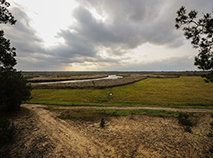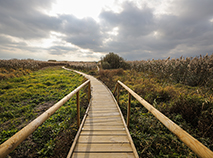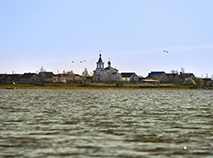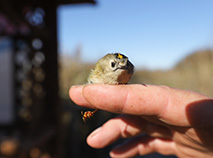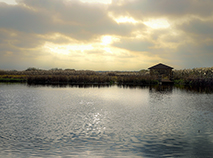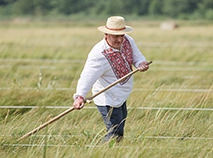Sporovsky Biological Reserve
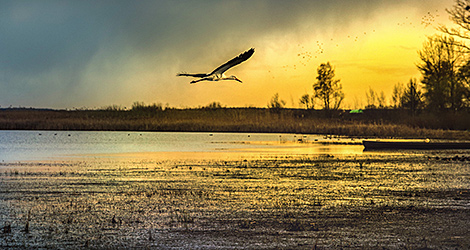
The National Biological Reserve Sporovsky is a unique nature reserve in the Belarusian Polesie region and one of the country’s richest in terms of diversity of flora and fauna, the first in Belarus to receive the international status of a Ramsar site. Its symbol is the aquatic warbler (Acrocephalus paludicola), the rarest songbird in Europe. Local wetlands are home to 9% of the world's population of this endangered species.
The state-protected reserve Sporovsky is located in Brest Oblast straddling four administrative districts: Bereza, Drogichin, Ivanovo and Ivatsevichi. Its area is 19,384 hectares. The environmental and educational center of the reserve is located in the village of Vysokoye, Bereza District.
Land of Aquatic Warbler and others
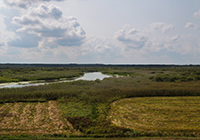
Established in 1991, the Sporovsky Reserve is the largest massif of lowland swamps in Polesie, located in the floodplain of the Yaselda River. It is unique in terms of acreage and natural preservation for the Central part of Europe. The ancient Sporovsky swamps and Lake Sporovskoye are in a state close to pristine, which helped many endangered species of plants, animals and birds to survive. Turning this area into a reserve has provided protection for about 40 species that live almost exclusively here. Many of them are globally threatened: the number is declining due to the overgrowth of swamps and economic activities.
The flora of the reserve includes more than 600 species of vascular plants, which accounts for about 35% of those growing in the country. And 20 species are listed in the Red Data Book of the Republic of Belarus. For example, in Sporovsky you can admire the most beautiful Belarusian orchid - lady's-slipper (Cypripedium calceolus L), which is not only the oldest representative of the orchid family, but also the most vulnerable, sensitive to changes in the environment. The lady’s-slipper is also listed in the International Red List of Threatened Species.
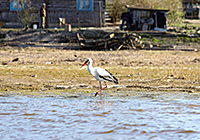
The fauna of the Sporovsky Nature Reserve is also unusually diverse. There are 123 species of nesting birds, 32 of which are listed in the Red Data Book of the Republic of Belarus. The reserve is home to 25 species of mammals (excluding small rodents and bats), 6 species of reptiles, 8 species of amphibians, 34 species of fish and more than 245 species of insects.
The most numerous of the reptiles are lizards (sand and viviparous), grass snakes. There are marsh turtles and copperheads, which are protected species. Of the amphibians, the sharp-faced and grass frogs are the most common. Of the rare ones there is the cane toad, which is listed in the Red Data Book of the Republic of Belarus. Of the fish there are pike, roach, tench, bream, crucian carp, carp, bream, perch, there are channel catfish, three-spined stickleback, nine-spined stickleback and others, among the rare ones are river lamprey.
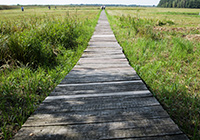
Mammals include the elk, European roe deer, red deer, wild boar, common raccoon dog, European polecat, stoat, beech marten and pine marten, red fox, brown hare, American mink, Eurasian beaver, muskrat, otter, wolf, etc. The badger is a protected species.
It is no coincidence that the Sporovsky Biological Reserve is one of the largest habitats of globally threatened bird species (it has the status of an Important Bird Area - IBA). It is home to the aquatic warbler, greater spotted eagle, meadow pipit, great snipe, black-tailed godwit, short-eared owl, corn crake, Eurasian curlew...
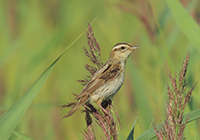
According to ornithologists, the aquatic warbler is Europe’s rarest songbird. It breeds in Belarus, Ukraine, Poland, Lithuania and Germany. Its stronghold now is Belarus where 43% of the world's population lives, including approximately 9% in the Sporovsky Biological Reserve, and about 27% in the neighboring Zvanets Landscape Reserve.
At the end of August, this small bird (under 13cm long and about 10g big), leaves for its wintering grounds in Africa covering the distance of 7,000-8,000 km. Experts have discovered that on their way from Belarus to Mali deep into the African heartland, this bird stops in Senegal to rest and feed. In May, the aquatic warbler returns to its nesting sites. However, if a swamp becomes overgrown or the living conditions change due to other factors, the bird disappears...
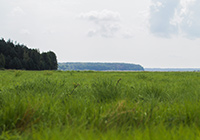
In recent decades, specialists from the Sporovsky Biological Reserve have been actively dealing with the problem of overgrowing of unique floodplain swamps, including through international assistance projects. Back in the early 2000s, scientists pushed for banning any economic activity in swamp areas, but it turned out that this was not enough: excess vegetation should be removed to make space for plants and animals.
Measures are also taken to manage the aquatic warbler population, because it is in Belarus that they have maintained relatively stable populations, specifically in two largest swamps - Sporovskoye and Zvanets. The latter has Europe’s biggest aquatic warbler population. In 2018, the first 50 aquatic warbler chicks were translocated from the Zvanets Landscape Reserve to Lithuania’s Žuvintas Biosphere Reserve. In 2021, another 35 chicks were translocated to the Servech Hydrological Reserve in the north of Belarus.
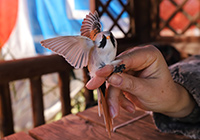
A nature trail “In the land of the aquatic warbler” has been created in the Sporovsky Biological Reserve. Today it is among the top 10 most popular and interesting trails in Belarus. The route is circular (3 km) and crosses the river twice via a ferry crossing, which is its distinctive feature. The nature trail passes through a low-lying swamp (wooden flooring), a pine planting, a slope leading to the bank of the Yaselda River, and an observation tower.
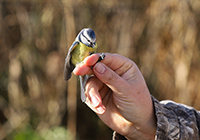
You can see and hear a lot of birds on the trail. The best time to visit the place is from April to October before the birds leave for wintering. In autumn and spring you can combine a tour of the eco-trail with a visit to the bird ringing station Yaselda. The place gathers experienced ornithologists, birdwatchers and simply enthusiasts eager to make their contribution to the nature conservation efforts.
Sporovskie Senokosy eco festival
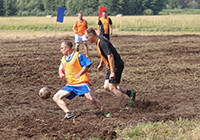
Another way of preserving the unique ecosystem of the reserve and popularizing this truly amazing nature is the Sporovskiye Senokosy eco festival founded in 2007. The festival is held in August. The annual program features the scything boggy meadows championship and Belarus’ only boggy meadows football event.
The festival has already become a signature event not only for Brest Oblast but also the entire Belarus.
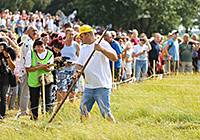
Teams participating in the scything championship are set a task to mow by hand fenny grass - thick, high, and heavy from moisture – on the area determined by the organizers. Even a small share of bog vegetation mowed during the competition make a contribution to the preservation of biodiversity of this unique territory.
The eco festival visitors are also offered to take a tour of the bird ringing station and the eco-trail, to admire the surroundings during a hang-glider flight, get familiar with folk culture, crafts and authentic cuisine of the residents of local Polesie villages.
Water tourism festival
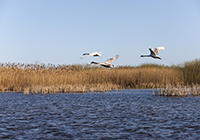
In 2022 the Sporovsky Biological Reserve launched another interesting event - the Yaselda Waves water tourism festival, which takes place in June. The festival is held in the village of Vysokoye on the bank of the Yaselda River near the ferry crossing of the eco-trail “In the Land of the Aquatic Warbler”.
The program features the Sporovo Regatta (9.5km) along the Yaselda, short-distance races, canoeing and kayaking workshops, marching song concerts, crafts and food making contests.
Sporovsky Biological Reserve humanitarian project
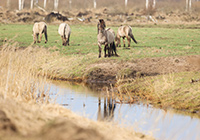
In 2023, the Sporovsky Biological Reserve and the United Transport and Logistics Company - Eurasian Railway Alliance concluded an agreement to implement the Reintroduction of populations of large herbivorous animals for the restoration of floodplain meadow ecosystems project.
Implementation period: 2023-2024
The project aims to create a new micro-population of tarpan-like horses (30 head) and a new grouping of turo-like cattle (17 head) in the Sporovsky Biological Reserve, which will make it possible to create a new habitat for such rare bird species as dupel, great spindle, and great crested grouse.
Total financing: RUB1,500,000 ($20,000)







 print version
print version make home page
make home page add to bookmarks
add to bookmarks